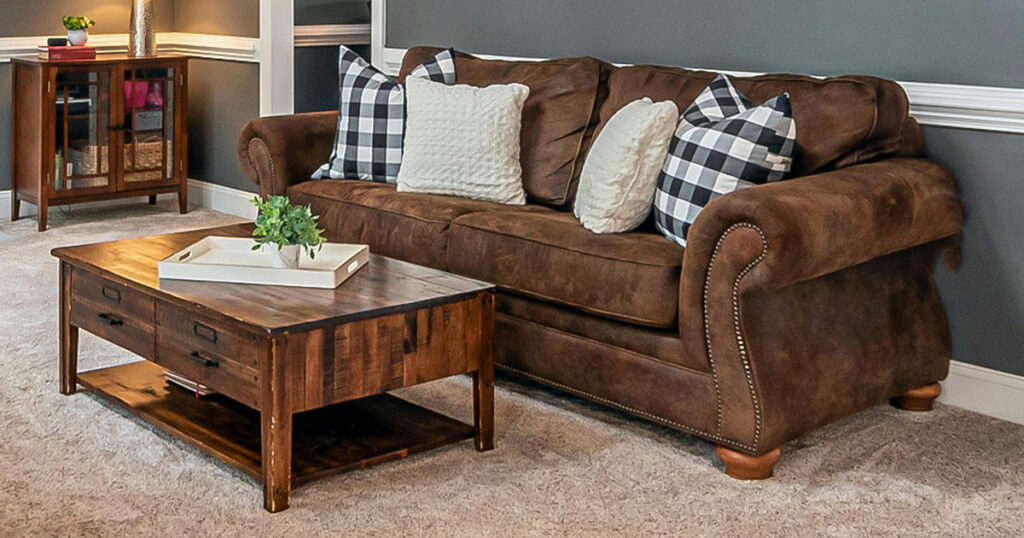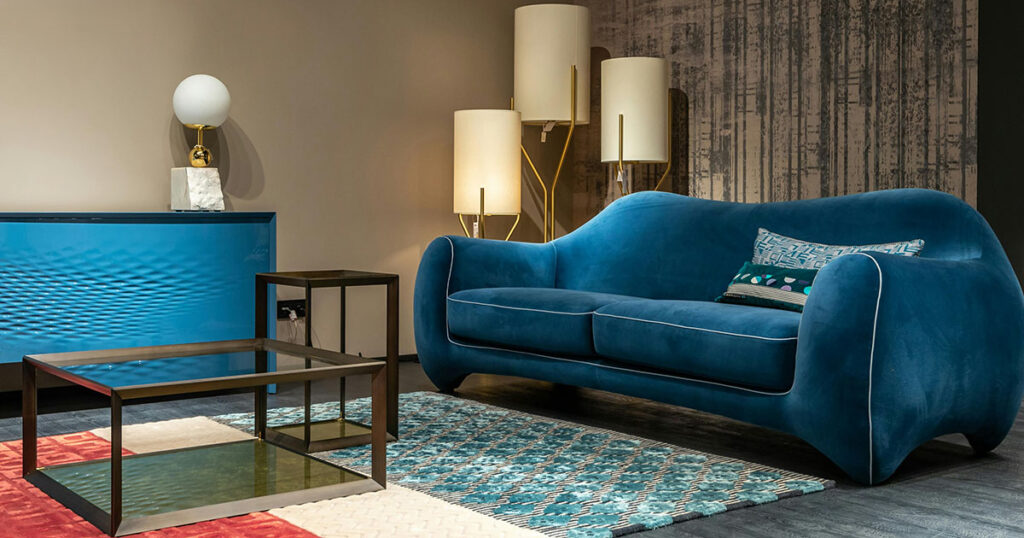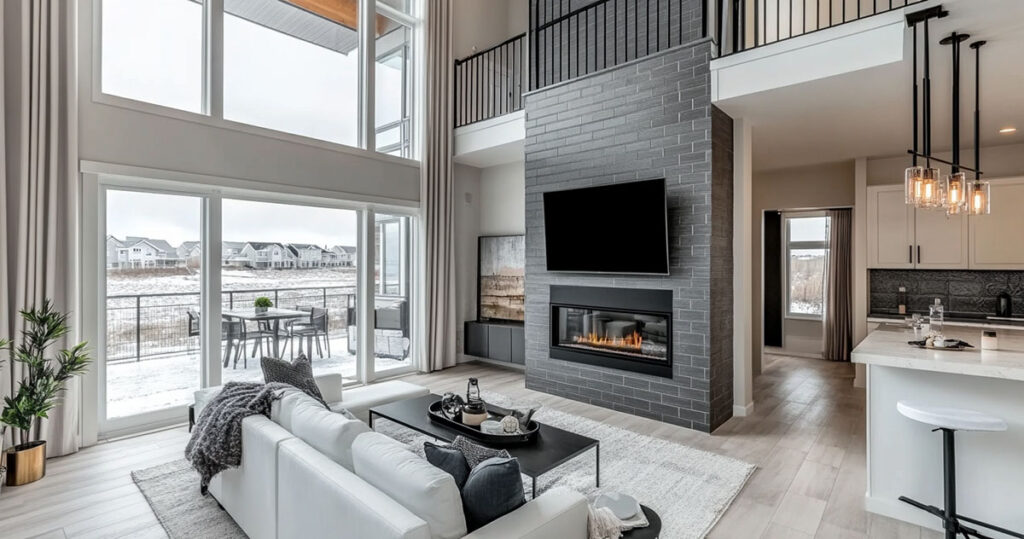As a facility manager or procurement specialist for an airport, selecting the right carpet is a major decision.
Airport carpets must withstand extreme foot traffic while maintaining appearance and contributing to the overall passenger experience.
This guide explores everything you need to know about tufted carpets for airport applications.
Why Carpet in Airports?
Airports globally choose carpet flooring for several compelling reasons:
- Noise reduction – Carpet significantly dampens footfall sounds and absorbs echoes in expansive terminal areas
- Comfort underfoot – Provides a softer walking surface for travelers spending hours in the terminal
- Safety – Offers excellent slip resistance compared to hard flooring
- Design flexibility – Creates opportunities for branding and wayfinding through patterns and colors
Tufted Carpets: The Airport Workhorse
Tufted carpets dominate the commercial carpet market for good reasons.
They’re made by inserting yarn through a backing material using hundreds of needles, then securing with a secondary backing.
This manufacturing process offers several advantages for airport applications:
Production Benefits
Tufted carpets can be manufactured quickly and cost-effectively compared to woven alternatives.
This means faster turnaround times for large airport installations and more budget-friendly options without sacrificing quality.
Construction Versatility
Tufted carpets come in various pile constructions to meet specific needs across the terminal:
- Level loop piles provide exceptional durability for the highest traffic areas
- Cut piles offer a more plush appearance for premium lounges
- Cut-and-loop patterns incorporate texture for both visual interest and dirt-hiding capabilities
The tufting gauge (stitches per inch) and pile density are crucial specifications to examine. Higher density tufting creates more durable carpets that can withstand the constant pounding of airport foot traffic.
Printed Carpets: Design Freedom
For airports seeking maximum design flexibility, printed carpets offer compelling advantages. These are typically tufted carpets with designs printed directly onto the surface using dye-injection or digital printing technology.
Design Possibilities
Printed carpets allow for virtually unlimited pattern and color options. Airports can incorporate:
- Complex local cultural motifs
- Airport branding and logos
- Wayfinding elements
- Photorealistic images or intricate designs
This design freedom makes printed carpets ideal for creating a sense of place or reinforcing brand identity throughout the terminal.
Performance Considerations
When selecting printed carpets, remember that the pattern is applied only to the fiber surface. In extremely high-traffic areas, this may mean the design gradually wears or fades before the carpet itself wears out. For maximum longevity in the busiest sections, consider patterns with some color variation to help disguise wear.
Material Selection: The Foundation of Performance
The fiber used in airport carpets dramatically impacts performance, appearance, and maintenance requirements. Here’s what you need to know about the primary options:
Nylon: The Gold Standard
Nylon (polyamide) is the workhorse fiber for airport applications.
Its exceptional wear resistance and resilience make it bounce back from compression, helping carpets maintain their appearance under heavy foot traffic.
There are two main types to consider:
- Solution-dyed nylon has color added during manufacturing, resulting in superior colorfastness and stain resistance.
- These carpets resist fading from harsh cleaning or UV exposure – ideal for areas with significant natural light.
Piece-dyed nylon allows for more color variation but may be slightly less resistant to fading and staining.
Both Type 6 and Type 6,6 nylons perform well, with nylon 6,6 offering slightly better heat and crush resistance for the most demanding areas.
Wool and Wool Blends: Premium Appeal
Wool offers a luxurious feel and appearance with natural benefits like sound absorption and flame resistance. Pure wool carpets are rare in airports due to cost and wear considerations, but 80/20 wool-nylon blends combine wool’s warmth and appearance with nylon’s durability.
These blends make excellent choices for premium lounges or VIP areas where a higher-end feel is desired without sacrificing performance.
Durability Features for High-Traffic Success
Airports present unique challenges for carpeting. Understanding the specific durability features needed will help you select products that can withstand these demands.
Dense Pile Construction
For areas seeing millions of passengers yearly, carpet construction must be engineered for maximum traffic endurance. Low-profile, tightly tufted level loop carpets typically perform best in heavy foot traffic areas. The loops reinforce each other and distribute weight, preventing the pile from flattening.
High face weight (ounces of yarn per square yard) should be coupled with tight construction gauge and firm backing for optimal performance.
Rolling Load Resistance
Airports have extensive wheeled traffic – rolling suitcases, luggage carts, wheelchairs, and cleaning machines. Your carpet must:
- Allow smooth rolling without significant resistance
- Resist damage from these constant loads
- Maintain its appearance despite this stress
Low, tightly-constructed carpets provide the ideal balance of comfort and wheel-friendly performance. The backing and adhesive system are equally important – strong glue-down installation prevents rippling or delamination under repeated rolling loads.
Wear Resistance Strategies
Strategic design choices can extend carpet life significantly. Consider these approaches:
- Select patterned carpets with multicolor yarns that hide soil and wear
- Choose small-scale patterns or mottled designs that make traffic paths less obvious
- Use solution-dyed fibers to ensure color consistency even as the carpet wears
Maintenance Requirements & Planning
Even the highest quality carpet requires proper maintenance to reach its full lifespan potential. Airport carpets need rigorous cleaning protocols:
Daily Care
Daily vacuuming is essential, with high-traffic areas potentially needing multiple passes daily.
This removes abrasive grit that can wear down fibers prematurely.
Entrance areas are critical maintenance zones. Installing proper walk-off mats or grille systems at doorways captures dirt before it reaches the main carpeting, dramatically extending carpet life throughout the terminal.
Prompt spot cleaning for spills prevents stains from setting. Training staff on proper spot cleaning techniques and having portable extractors available ensures quick intervention.
Deep Cleaning Schedule
Beyond daily care, periodic deep cleaning maintains appearance and hygiene. Methods include:
- Hot water extraction (steam cleaning) for thorough soil removal
- Low-moisture encapsulation cleaning for faster drying times
Most busy terminals schedule deep cleanings quarterly or bi-annually in main areas, with additional cleanings as needed in food courts or other high-soiling areas.
Cleaning methods should match the carpet fiber – solution-dyed nylon can handle more aggressive cleaning, while wool-blend carpets require pH-neutral cleaners and careful drying.
Total Cost of Ownership: Beyond Initial Price
Making a wise carpet investment requires looking beyond the initial purchase price to consider total lifecycle costs:
Initial and Installation Costs
Tufted commercial broadloom typically offers the lowest initial cost per square yard, especially in simple patterns or solid colors.
Installation complexity also affects total cost – complex patterns requiring exact matching or installations around numerous obstacles increase labor costs.
Lifespan Considerations
A critical cost factor is how long the carpet will last before requiring replacement.
With proper maintenance, high-quality tufted carpets in airport settings typically provide:
- 7-10 years of service in main traffic areas
- Longer life in less traveled zones
When calculating return on investment, factor in not just the material costs but also installation and removal expenses for each replacement cycle.
Maintenance Expenses
Different carpet types influence ongoing maintenance costs.
Patterned or multicolored carpets that hide soil might require less frequent deep cleaning because they maintain acceptable appearance longer.
Consider keeping attic stock (extra matching carpet) for repairs to damaged sections, which extends the life of the overall installation.
Design Considerations: Beyond Aesthetics
Carpet is a powerful design element in airport terminals, serving multiple purposes beyond basic floor covering:
Creating a Sense of Place
Carpets can incorporate local cultural elements, natural features, or artistic motifs that give passengers a sense of the region they’re visiting. This creates a memorable experience and differentiates your airport from others.
Practical Wayfinding
Strategic carpet design helps guide passengers intuitively:
- Different colors or patterns can delineate functional areas
- Directional patterns can subtly lead passengers along desired paths
- Borders can define queue areas or seating zones
Acoustic Benefits
In large terminal spaces with hard surfaces, carpet significantly improves acoustics by absorbing sound rather than reflecting it. This creates a more pleasant environment where announcements are clearer and background noise is reduced.
Sustainability Considerations
Modern airport projects increasingly prioritize environmental responsibility:
Material Selection
Many commercial carpets now incorporate recycled content – from nylon yarn made from reclaimed fishing nets to backing made from recycled plastic. When specifying airport carpets, look for options with high percentages of recycled content.
Natural fibers like wool offer renewable and biodegradable benefits, particularly in wool-blend products that combine sustainability with performance.
Indoor Air Quality
Ensure carpets have appropriate green certifications for low VOC emissions. Products meeting standards like Green Label Plus or similar European certifications protect passenger and staff health by minimizing off-gassing.
End-of-Life Planning
Consider what happens when the carpet eventually needs replacement. Some manufacturers offer take-back programs to recycle old carpet into new products. Planning for end-of-life can significantly reduce environmental impact.
Fire Safety Requirements
Airport carpets must meet stringent fire safety standards appropriate to your region:
- In North America, look for Class I ratings for flame spread (ASTM E648) and limits on smoke density (ASTM E662)
- In Europe, carpets typically need Bfl-s1 classification under EN 13501-1
- Middle Eastern airports often reference either European or North American standards
Never compromise on these requirements – ensuring proper fire ratings is essential for passenger safety and code compliance.
Making Your Selection
When evaluating tufted carpets for your airport project, prioritize these considerations:
- Traffic volume and patterns in different areas of your terminal
- Local climate conditions and entrance protection needs
- Desired lifespan and replacement budget cycle
- Maintenance capabilities and staffing
- Design and branding goals for the passenger experience
- Regional fire and safety regulations
- Sustainability objectives and certifications
By carefully balancing these factors, you can select carpet solutions that provide the optimal combination of performance, appearance, and value for your specific airport environment.




